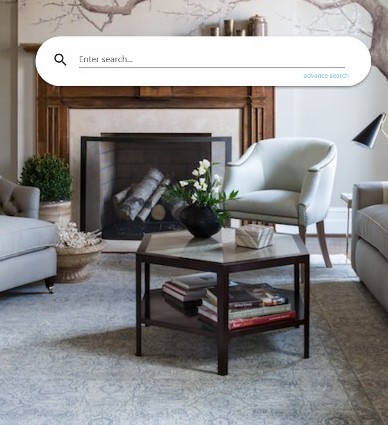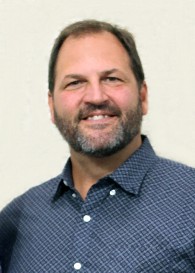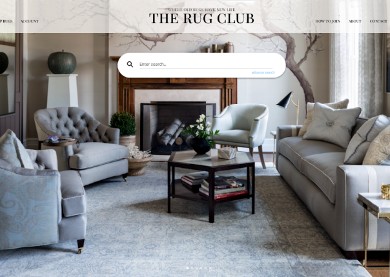RUG CLUB AIMS TO SERVE AS INVENTORY CLEARINGHOUSE FOR RETAILERS

The Rug Club acts as an online broker to connect retailers across North America with a database of area rugs that can be bought and sold anonymously within its community of retail members. |
ATLANTA -- Steve Cibor and son Shane Cibor aim to solve a problem area rug retailers have struggled with for years: excess inventory.
Their new venture,
Rug Club, is designed to serve as an online broker to connect retailers across North America so their unwanted inventory can be sold online between its members. The site is slated to launch at the end of February.
"My thought for the past couple of years is that billions of dollars of rug inventory are sitting in showrooms. Eighty percent of it was once programmed but is no longer programmed. That's dead inventory," said Steve Cibor, who is also the owner of Baltimore-based Tamarian Carpets. Rug Club is being run as a separate entity from Tamarian, Cibor told RugNews.com in an exclusive interview.
 |
"As retailers start selling their old inventory, they'll be able to use that revenue to come to markets and buy new inventory." -- Steve Cibor, Rug Club partner. |
Only retailers with brick-and-mortar stores are eligible to become members. "It's a retail to retail platform; we are not selling to the public. You have to have rugs to contribute in order to participate," added Cibor, who estimates there are potentially about 2,500 retailers who would qualify as members. Importers and manufacturers cannot become members, although Cibor anticipates that Tamarian will use the site to sell off some of its classic inventory.
Once they're approved, members can list the inventory they're trying to sell off, setting their own prices. Any caliber or price point of rug can be listed on the site; the seller will provide photos and descriptions, and will vouch for the condition of the rug. Rug Club takes a 15 percent brokerage fee on all rugs purchased.
Rugs will be searchable on the password-protected site by a number of parameters, including style, construction, material, shape, pattern, and country of origin.

Slated to launch the end of this month with the tagline, "Where Old Rugs Have New Life," The Rug Club website will have programmed and one of a kind rugs in its retail-to-retail database.
How it Works
Cibor describes a theoretical situation of how Rug Club might work: if a retailer in Chicago has a 9x12 in a programmed design that has been discontinued, but a customer wants a 10x14, the retailer no longer has to lose the sale. He can check Rug Club's inventory, where he might find a 10x14 listed by a store in Arizona. He could purchase the rug, the Arizona seller would pack it up, and it would be picked up by a shipping company for delivery to the buyer. The names of the buying and selling retailers are kept concealed in the transactions. Aside from retailers seeking to fill specific requests from customers, Cibor sees other uses for Rug Club, such as insurance companies needing to replace damaged items.
Currently Rug Club has more than 100 members, and the company is in the process of adding and cataloging the inventory that will go live later this month. Accuracy of the data is critical, and three phases of roll out are planned: phase one is uploading data and photos of programmed rugs, phase two is one of a kind rugs, and phase three will be antique rugs.
Cibor hopes to have around $450 million worth of inventory on the site by the end of March, and is hoping to have 500 members participating by summer.
Generation-Next
 |
Shane Cibor spearheads the program -- with $450 million in inventory expected on RugClub.net by spring 2019. |
Cibor's son Shane is a partner in the business, a move that Cibor hopes illustrates new opportunities for the next generation of the rug industry. Shane first joined Tamarian early in 2018, but switched to working exclusively with Rug Club in the fall. In spearheading the program, some of his duties include managing the IT team, designing the website and search functions, ensuring accuracy of product data, and running the office.
Cibor likes the idea that Shane is not simply following in his footsteps at Tamarian. "I don't want him to just do what I did. He's got the opportunity to build on the experience I have, and forge his own identity."
A key aspect of that experience is Cibor's early adaption of technology, not just to import product specs into a database, but also to monitor Tamarian's inventory from production all the way through to point of sale. To that point, Tamarian is known for supporting its dealers by allowing them to exchange rugs that haven't sold for other rugs more suited to the tastes of the local demographic.
Revitalizing the Industry
"The Rug Club concept comes from the system we've used for the past 20 years. If you become a Tamarian dealer, you can exchange any rug you've ever purchased from us for the exact dollar amount of the original purchase. So if three years ago you bought a rug and you've never sold it, we take that rug back for full value. We'll find a rug to replace it - possibly one you've already sold three or four times. We're proactive. We want sell-through. With Rug Club, we're taking that system and helping retailers rotate their inventory."
Cibor thinks Rug Club could help revitalize the rug industry overall. "As retailers start selling their old inventory, they'll be able to use that revenue to come to markets and buy new inventory." And that's a win-win for everyone involved.